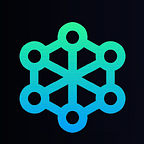How to move from rational data storage to decentralized data storage?
Data and the modern day demands for it have been growing exponentially, from the collection of big data to even more complex applications such as blockchain. Gone are the days where a single computer could store all digital information, because that wouldn't scale well with multiple objects or even just a handful of items. In order to accommodate these demands, we have had to develop new tools and tech in order for data storage. The most prominent tech development has been decentralized tech, which is hailed by many tech giants such as IBM and Microsoft. However, this tech is still primitive in comparison to what's yet to come in terms of adapting this tech into a viable alternative for traditional relational storage methods.
What exactly is decentralized data storage?
It is the concept of storing data using a distributed ledger (database) instead of through a centralized server or database. Decentralization happens via many nodes, which are agreements between two or more parties to follow certain rules in order to achieve specific goals. These nodes run programs that verify all information that is stored there, because if they didn't do this, then bad actors could corrupt the information stored on the ledger. Blockchain technology utilizes this same type of process; it's just at a much larger scale.
So what are the benefits of decentralizing data storage?
Well for starters, more people have access to it. Since data is not stored on a single server, we don't need to worry about a centralized third party holding on to it and making us pay for it. Many companies and individuals opt to use cloud storage services like Dropbox or One Drive, but why do we need to do that? We can just as easily use decentralized storage. With this type of data storage, the only people who have access to the data are those who have permission, and that permission can be revoked at any time by controlling permissions within the program that stores the data. This is great for those who want ultimate control over their personal information. Another benefit of decentralized data storage is immutability; what gets written on this ledger cannot be changed unless everyone agrees to change it.
What are some drawbacks of using this type of data storage?
As with any new technology, there are always cons that the developers must account for. Right now, these cons include things such as high latency time and high bandwidth usage. In order for a decentralized ledger to work properly, nodes need to talk to each other and communicate, which can cause problems if they don't connect or communicate at a fast rate. We have already seen how bad internet connectivity issues can delay payments on the blockchain, so things like these need to be taken into consideration when building a data storage platform. The other con that I have witnessed firsthand is that since decentralized ledgers are still using the old way of doing things, if you want to migrate data from a traditional system to a decentralized one, you have to move each transaction individually. This is because these transactions are being verified by many nodes, so changing the status of one transaction means re-verifying everything before updating it.
So how will this be changed?
The developers who are working on creating these new technologies are already working on solutions for these cons right now. As we have worked with several teams that are creating storage dapps (decentralized apps) that utilize the blockchain technology in order to provide us with viable alternatives for traditional data storage. My advice to anyone who is interested in developing their own dapps is to make sure that there is a solution for the cons that exist right now. As you will see, some dapps do not account for these issues and end up failing miserably, like the infamous Filecoin.
How will relational data be changed to decentralized data?
Until now, when you interact with data, the data is in some way tied to you. When your friends call you or when there is an update on social media, the data that is changed is tied to your account in some form. This can also apply to emails, which are often sent from our email address. Other than this option of sending emails, all of our email messages are in one place with an inbox in order for us to view them.
With blockchain technology, data does not have a single location where it is stored; instead every node writes its own version of it on the ledger that's responsible for storing that particular block. As you can see in the following screenshot, each node has its own copy of the data (in blue).
In order to move data from a traditional system to a decentralized one, as well as from a decentralized system to a traditional one, we would have to re-verify all the data that is stored there. In other words, if an old email was sent from an old account and you now want to send it from another account, you will have to go back and forth each time in order for it to be able to work. This can take a long time and cause problems with your workflow. Currently there are only a handful of dapps that are solving this problem for us so far.
Now that we understand how data storage works on the blockchain, let's check out what the alternatives are for storing information today.
